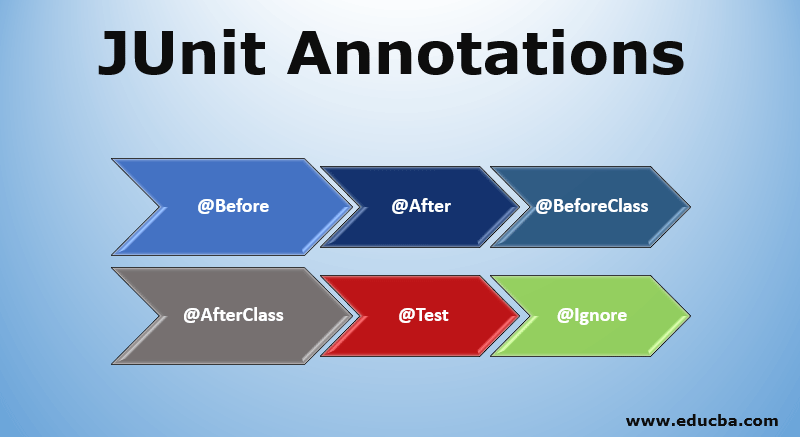

- #JUNIT ANNOTATIONS HOW TO#
- #JUNIT ANNOTATIONS SOFTWARE#
- #JUNIT ANNOTATIONS CODE#
- #JUNIT ANNOTATIONS FREE#
- #JUNIT ANNOTATIONS WINDOWS#
The method runs after all the method of the current class is executed in simple terms. This deallocation of resources or any important task that is to be done after the execution of the whole class is done by the method. the resources allocated in the method need to be released after the execution of all the methods of the current class. prior to the execution of any method in a Class. Its working is similar to the annotation only difference being that executes the method prior to the execution of every method, whereas executes only once, i.e.

When annotation is used before any method, that method executes before any test method in a class. annotation is used in the scenarios when some actions need to be performed before the execution of any test case of a particular class, like creating a connection with the database, making an entry in a database, entry in the logs, etc. For example, in the case of the sub and superclass relationship, the method of subclass/ current class is executed before the method of the superclass. One important point that should be noted for annotation is that it will execute even when the or methods throw an exception. It is used in cases when some actions need to be performed like releasing resources, cleaning up memory, printing anything on the console after the execution of the method (after the execution of every test case). In the case of inheritance, methods of the superclass are called first and then the methods of the current class. Annotating any public method with this annotation allows the code/ method to run before every actual method. In that case, annotations came into the picture. are scenarios when some test cases or test data need to be created before executing the actual test case.
#JUNIT ANNOTATIONS SOFTWARE#
Web development, programming languages, Software testing & others 1.
#JUNIT ANNOTATIONS FREE#
The only difference with JUnit 5 is that it uses the Test annotation from the jupiter package.Start Your Free Software Development Course If you’re familiar with JUnit 4, you’ll see the basic test method looks exactly the same, and we can use whichever format name we usually use for our tests. Use the same shortcut again inside the class itself to get IntelliJ IDEA to generate a new valid test method for us.
#JUNIT ANNOTATIONS CODE#
Create an ExampleTest using the shortcut to generate code ( ⌘N or Alt+Insert) in the project window.

Now the JUnit dependency is set up correctly, we can create our first JUnit 5 test. The final adle file should look like this:Ĭompile ':junit-jupiter:5.6.2' We need to tell Gradle to use the JUnit Platform when running the tests, by adding useJUnitPlatform() to the test section. There’s one last step we need to do for Gradle in order to correctly use JUnit 5. Once the Gradle dependency changes have been loaded, we can see the junit-jupiter dependencies in the External Libraries section of our project window.
#JUNIT ANNOTATIONS WINDOWS#
You must load the Gradle changes if you want IntelliJ IDEA to apply them.Ĭlick on the icon, or use ⇧⌘I, or Ctrl+Shift+O on Windows and Linux, to load the changes. You should see an icon in the top right of the Gradle build file when it has been changed. NOTE: if you try to search for a dependency and you don’t get the results you expect (either no results, or the versions seem out of date), make sure IntelliJ IDEA has an updated Maven Repository via the settings. Use the right arrow to open up the version options for this dependency, and choose version 5.6.2 (the most recent production version at the time of writing). Use Tab to jump into the dependencies list and use the down arrow until :junit-jupiter is selected. Typing "junit" in the artifact search box should give a list of possible dependencies. Given a Gradle build file, use ⌘N (macOS) or Alt+Insert (Windows/Linux) to add a new dependency.
#JUNIT ANNOTATIONS HOW TO#
This tutorial uses Gradle, for information on how to add JUnit 5 via Maven take a look at our blog and video on Migrating to JUnit 5 from JUnit 4. This provides an easy way for people to skim the content quickly if they prefer reading to watching, and to give the reader/watcher code samples and links to additional information.

This blog post covers the same material as the video. All code in this tutorial can be found in this GitHub repository. In this tutorial we’re going to look at features of JUnit 5 that can make it easier for us to write effective and readable automated tests.


 0 kommentar(er)
0 kommentar(er)
